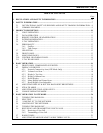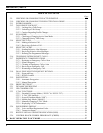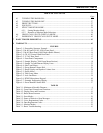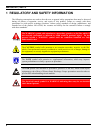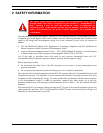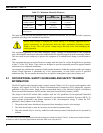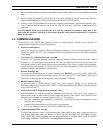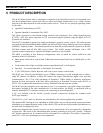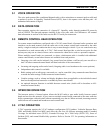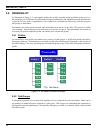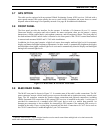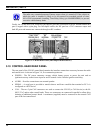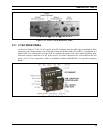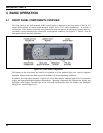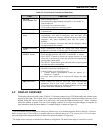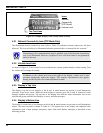
MM102014V1, Rev. G
3.1 VOICE OPERATION
The voice path operates like a traditional dispatch radio, with a microphone to transmit (push-to-talk) and
a speaker to receive. In OpenSky Trunked Protocol (OTP), there is no separate voice and data path – all
transmitted information is digital.
3.2 DATA OPERATION
Data operation requires the connection of a laptop PC. OpenSky works through standard IP protocols
such as UDP/IP. The data path operates similarly to the voice path, with a few differences. All external
data information in and out of the radio uses the RS-232 serial port connection.
3.3 REMOTE CONTROL HEAD OPERATION
For remote mount installations configured with a CH-103 control head, all normal radio operations and
interfaces can be made remotely from the radio unit via the remote control head connected to the radio
unit by a single twisted-pair connection that is easy to route through a vehicle. Up to six control units may
be attached to a trunk mount radio or V-TAC. Each control head provides a serial access point for data
and any one (only one at a time) of these can be connected to a data device such as a personal computer.
Where multiple control heads are connected, or where a dash-mount radio is installed with additional
remote control heads, several other features are available from each position:
• Outgoing voice calls can be initiated. (Any control head can initiate a call but only one can talk at a
time. All other connected control heads will hear both sides of the conversation.)
• Incoming and outgoing audio can be heard. (Outgoing audio is not broadcast at the source position.)
• Independent audio control is available.
• Radio settings such as talk group, scan mode etc., can be controlled. (Any connected control head can
override the radio settings of other connected control heads.)
• Comfort settings, such as volume and display brightness that are applicable to the individual control
head can be adjusted and cannot be overridden by other control heads.
• An optional intercom function is available between control units. (Audio will be broadcast to ALL
connected control heads.)
3.4 INTERCOM OPERATION
The intercom option, a licensed option, allows the M-803 radio to pass audio locally between control
heads and not over the network. It gives users at multiple control heads connected to the same radio the
ability communicate with each other without transmitting over-the-air. When activated, incoming network
radio calls are still scanned and broadcast at each control head.
3.5 V-TAC OPERATION
V-TAC operation requires the V-TAC hardware configuration (RF Combiner, Vehicular Repeater Base
VRB, and Mobile Radio Unit MRU) and offers the user four (4) different operating modes: Extended
Coverage for individual users (XCOV), Extended Coverage for a Talk Group (XCOV-TG), Scene of
Incident (SOI), and normal Mobile-Only operation. Refer to Section 5.23 for operating information on
these modes.
11



